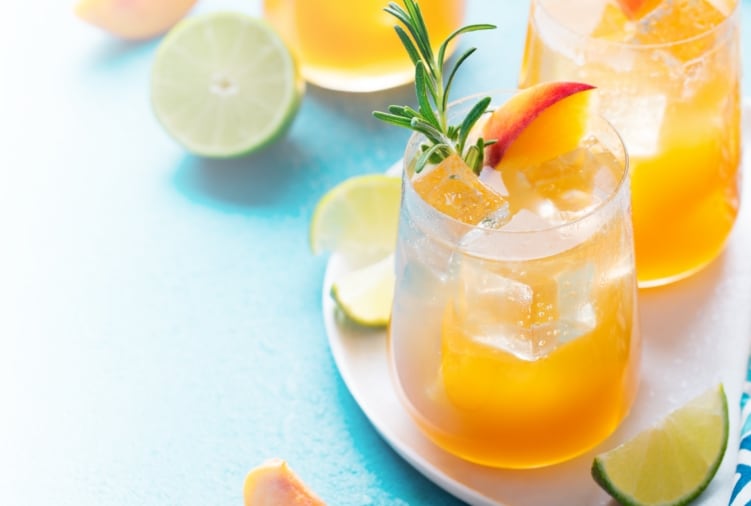Flavour inspiration for Synergy Flavours' latest launches has come from the renowned Michelin restaurant guides. In 2021, the French tyre maker and producer of Michelin guides announced that a monthly digital edition showcasing recommendations and new entrants would replace its annual guide.
Synergy Flavours tapped into ingredients, flavour profiles and combinations featured in the 2022 Michelin Great Britain and Ireland guide to appeal to growing trends and evolving consumer tastes.
“Taking inspiration from Michelin Star restaurant menus allowed us to anticipate new, innovative flavours and combinations,” said Vicky Berry, European Business Development Manager, Synergy Flavours.
The ingredient and flavour manufacturer anticipates these trends will ultimately filter through to mainstream product launches. “It was fundamental for us to not only look at new flavours coming through but also to review how they are being paired and combined,” added Berry.
New flavours and flavour concepts
Rhubarb and apple are new additions to the company’s Inspiring Fruits collection of fruit essences and flavours. British seasonal fruits have recently become a firm favourite of culinary dishes, Berry noted, as chefs use local produce to reflect growing calls for prioritising the environment when selecting and sourcing ingredients.
The UK-based company has also developed a range of flavour concept ideas using its newly launched flavours to provide insights into optimal flavour pairings. The company’s flavour concepts include rhubarb and basil, pear and verbena, blood orange and yoghurt, white chocolate and bergamot, rose and lychee, and grapefruit and honey.

Favourite flavours and powerful pairings
Synergy researched the dessert menus of 49 Michelin Star restaurants in the UK to see how different chefs layered flavours and blending profiles. Analysing Michelin menus, it sought to gain insights for manufacturers throughout the food and beverage industry and provide culinary inspiration for future flavour developments.
Through its research, Synergy found that rhubarb was the most used flavour on the dessert menus, most likely due to its seasonality and versatility in various pairings, including ginger or pistachio. However, while rhubarb was the most popular profile, Synergy found it was used differently across restaurants.
“While two-star Michelin restaurant Claude Bosi paired rhubarb with black cardamom and green pistachio, it seemed to be the one-star restaurants that were really championing this quintessentially British fruit on their dessert menus,” highlighted Berry.
One-Michelin-starred restaurant, Meadowsweet in Holt, went with a classic pairing of rhubarb and ginger and added a twist with sweet cicely, a sweet aniseed-flavoured herb. Jamavar in London, a one-Michelin-starred restaurant that explores pan-Indian flavours, has created a rhubarb Chuski Falooda, a decadent chilled dessert with rhubarb, basil seeds and saffron.
“Seeing expert chefs coming up with interesting twists on such a classic flavour profile gave us a lot to think about and encouraged us to consider more unique pairings, such as the tang of blood orange combined with creamy yoghurt or the tartness of rhubarb softened with aromatic basil,” detailed Berry.
Classic flavour choices of chocolate, vanilla and apple came a close second. Spotting the latest premium indulgence trends and the ongoing popularity of chocolate, Synergy also developed new Belgian chocolate and blonde chocolate flavours, enabling manufacturers to add a twist on classic chocolate flavours.
Chefs have also been demonstrating the flavour potential of pear. The food industry considers the sweet and less acidic notes of pear compared to apple a popular pairing option with a range of fruits, spices, nuts and indulgent ingredients such as chocolate.

Premium indulgence remains
To meet today’s consumers’ demands, flavour profiles to mask off-notes in nutritional products are popular among food and drink manufacturers, as are flavour solutions that enable sugar or butter reduction without compromising taste. However, consumers still seek the permissible and premium indulgence trends by searching for sweet flavour profiles such as chocolate and caramel.
“Whilst external factors such as inflation have certainly affected consumers’ shopping habits, it’s evident that people are still looking for a treat,” said Berry. For example, some consumers may reduce their spending by cutting down on alcohol purchases but will allow themselves to have a treat with a premium soda or a luxury dessert, Berry notes.
Synergy Flavours has seen how rich, indulgent flavours can offer a sense of escapism and comfort during times of uncertainty. “We’ve seen this across multiple applications, and Michelin menus were no exception, with classic flavours such as chocolate and caramel prevalent throughout,” Berry shared.
Local and seasonal
Customers and retailers are always interested in what is trending and want to anticipate flavour trends to be ahead of the curve. “Year on year, we are seeing a growing trend of product launches focusing on seasonality,” said Berry.
Synergy plans to review the dessert menus again in summer 2022 to map any seasonal impact and changes and respond accordingly with the development of new flavours to meet demand.
Flavour applications
Synergy has designed its new flavours and concepts to be versatile, stating that the new profiles can be used across several different applications, including bakery, dairy products, sports nutrition and beverages.
Using a trends-led approach to flavour development, Synergy Flavours can anticipate some of the up-and-coming flavours, such as bergamot, kaffir lime and honey. As a result, Synergy has also developed a range of concept ideas using its newly introduced flavours to help manufacturers create optimal pairings, such as rhubarb and basil, pear and verbena, white chocolate and bergamot, rose and lychee, and grapefruit and honey.



